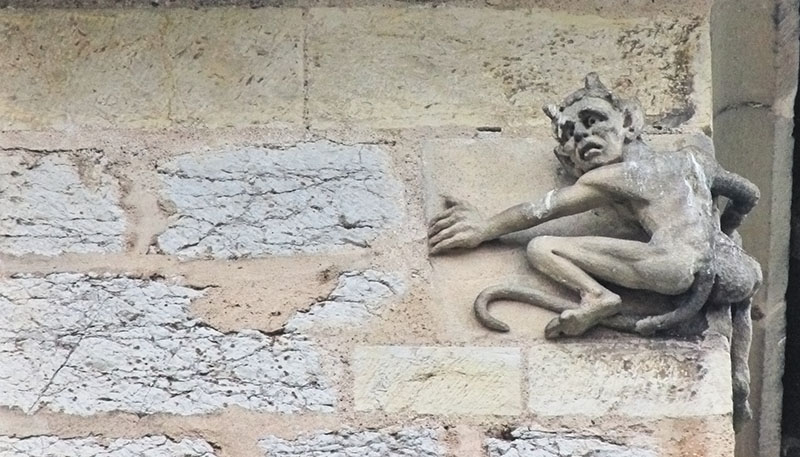Pont Valentré Cahors
Built at the time of the Anglo-French Wars, the Pont Valentré is an example of French military architecture from that period, and one of the finest fortified medieval bridges still in existence. It stands 24m above the River Lot and can be crossed only on foot. You will need to walk your bike. This magnificent, imposing bridge, is a very popular tourist attraction in summer.
The first stone was ceremoniously laid in 1308 by the mayor of Cahors. Construction took 70 years and gave rise to the legend that the Devil was involved in assisting the architect. In 1350 the deck of the bridge was opened. The three towers were not completed until 1380, during the Hundred Years’ War.
Tucked away beneath the cliffs of Cahors, the Pont Valentré spans the River Lot. It is 138m long and 40m to the top of its towers. It consists of six main Gothic arches, three 3-story square towers, and two entrance ‘chatelets’. The western one has almost totally disappeared. Each passageway beneath the towers could be closed by two doors and a portcullis. In addition, the entrances to the bridge were protected by embrasures which are no longer there today.
The Legend of Pont Valentré
The Devil naturally came back empty-handed and the deal was broken. In revenge for having been tricked, the Devil sent a demon each night to loosen the final stone in the central tower (known as the Devil’s Tower) to ensure that the bridge was never finished.
During the restoration of the bridge in 1879, the architect Paul Gout inserted a stone bearing the sculpted image of an imp into the central tower. As a result, every time the Devil checks to see that the bridge is still unfinished, he is tricked into thinking that the imp has removed the stone.
Crossing the bridge is included in our Bordeaux to Montpellier coast-to-coast ride and in our Dordogne & Lot Valleys Cycling Tours.

BOOK YOUR TRIP TODAY!
Have any questions? Contact us!
+353 83 3362342
paddy@nulleuropecyclingholidays.com
Cavan, Ireland & Limoges, France.
Year round
Error: Contact form not found.

